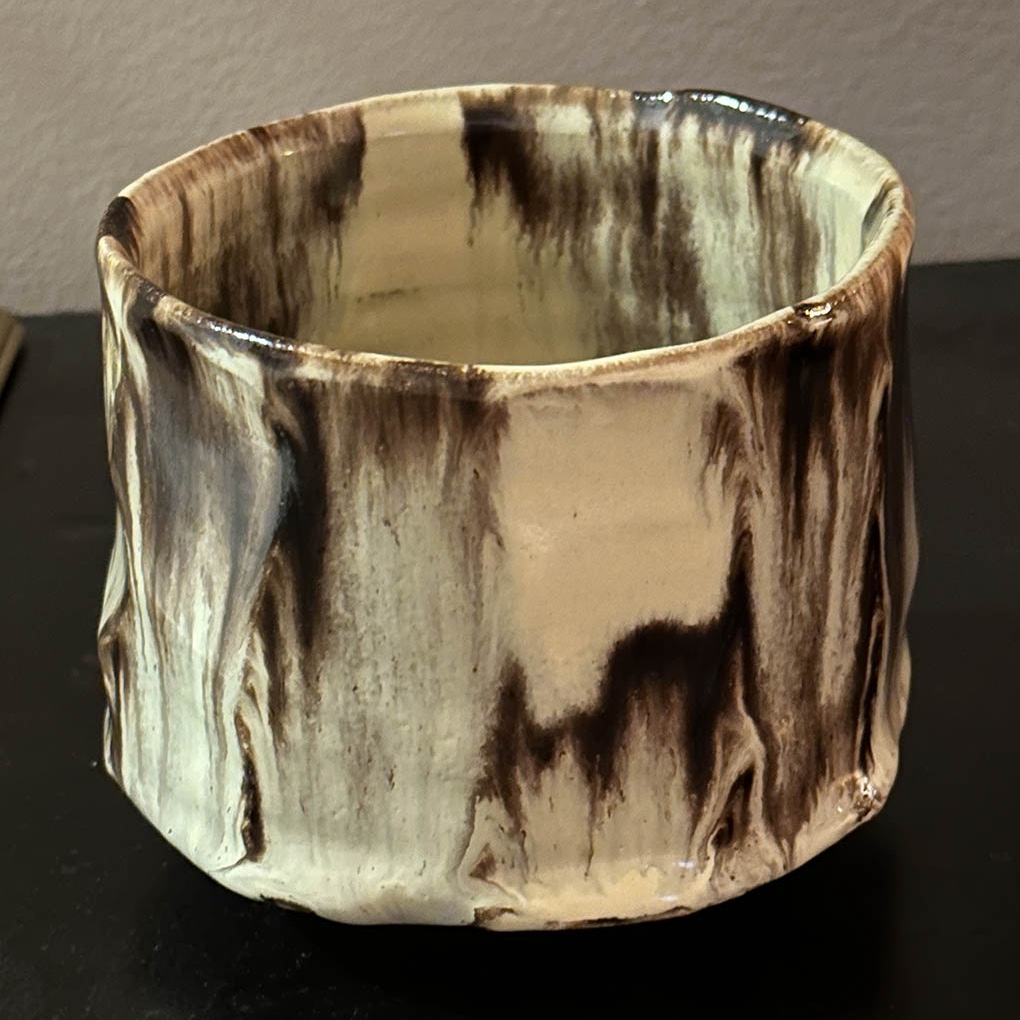Today we are honored to announce the official launch of The Imagine Project – IMAGINE: Peace Through a Bowl of Tea, a global peace initiative rooted in the spirit of chanoyu and dedicated to the lifelong teachings of Dr. Genshitsu Sen, (aka. Hounsai Daisōshō).
This project is a pilgrimage for peace—an offering of a bowl of tea as a vehicle to inspire, unify, and encourage people across cultures to reflect on and take action toward a more peaceful world.
🍵 Honoring a Legacy
At the heart of this project is a newly created tea bowl(chawan), that I have made that has been named “IMAGINE” by Dr. Sen Genshitsu, my lifelong mentor and one of the world’s great ambassadors of peace.
Accompanying the bowl will be a precious shikishi, a special placard hand-written by Dr. Sen with his enduring motto:
“Ichi wan kara Peacefulness wo” (Peacefulness through a bowl of tea)
These two treasures will be present at every event—symbolizing Dr. Sen’s presence and infusing each gathering with the depth of his vision and unwavering commitment to peace.
Each bowl of tea offered during this journey becomes a living expression of his lifelong mission, connecting hearts across cultures, languages, and borders.
🌿 A Global Pilgrimage
Over the next 18 months, The Imagine Project will travel to select locations around the world, holding intimate tea gatherings in inspirational spaces—tearooms, museums, gardens, and cultural venues.
These gatherings will:
• Bring people of all generations and backgrounds together
• Offer tea as a moment of stillness, connection, and shared reflection
• Invite participants to imagine and cultivate a more peaceful future
Each event is an act of quiet but powerful presence—guided by the belief that even the smallest shared moment can plant a seed of harmony.
📍 Upcoming Locations & Dates for 2025
Our journey begins this summer. Confirmed and developing venues include:
🇭🇺 Budapest, Hungary
July 17 & 19, 2025
📍 Hopp Ferenc Museum of Asian Art
🇫🇮 Helsinki, Finlandy
July 25th & 26th, 2025
📍 Suomenlinna Fortress- World Heritage Site off the coast of Helsinki
🇵🇱 Krakow, Polandy
August 3, 2025
📍 Manggha Museum, Krakow
🇺🇸 San Francisco, CA. USA
August 25th, 2025
📍 Grace Cathedral, San Francisco, CA. USA
Additional stops are planned through 2026 as the pilgrimage continues.
📸 Follow & Share the Journey
Dedicated Facebook, Instagram & or YouTube pages for The Imagine Project are currently under consideration, where we’ll share:
• Photographs/video and stories from each location
• Behind-the-scenes moments of the pilgrimage
• Messages of peace from hosts, guests, and fellow travelers
We invite you to be part of the conversation:
✨ Where did you participate? What moved you? What does peace mean to you today?
Your reflections and stories will be an essential part of this growing global dialogue.
We are inviting any parties interested in helping to support our Imagine Project with a donation on one of two levels;
*100,000 yen (all supporters at this level will receive a one-of-a-kind Sake Cup or 2 Tea Cups, boxed & signed by me)
*300,000 yen (donations at this level will receive a one-of-a-kind Tea Bowl, boxed and signed by me)
Please refer any inquiries to me personally at rmilgrim@hotmail.com & I will respond as soon as possible
🌸 Together, Let Us Imagine Peace
This project is not an official Urasenke Mission but a personally conceived, heartfelt offering—an invitation to join a quiet movement of intention focusing on healing and hope, inspired by one bowl of tea in honor of the man, Dr. Genshitsu Sen, who has welcomed the people of the world to share in the spirit, meaning & beauty of The Way of Tea for 75 years, and continues to do so today at the age of 102!
Let us come together, wherever we are, to imagine—and to realize—a peaceful future.
One bowl of tea at a time.
With gratitude,
Richard & Mari Milgrim












































































































